Organic, disposable, reusable, lemon-based? The right CO2 system for your planted aquarium or aquascape
Table of contents
- Why do aquarium plants needCO2 fertilisation?
- How doesCO2 get into the aquarium water?
- But isn'tCO2 chemistry? I don't want chemicals in my aquarium!
- CO2 in natural waters
- Good plant growth in the aquarium
- Can I run my planted aquarium withoutCO2?
- What is the right amount ofCO2 in the aquarium water?
- How do I monitor theCO2 content in the aquarium water?
- CO2 drop test
- CO2 continuous test
- What is the connection between light,CO2 supply and aquarium fertilisation?
- Frequently asked questions aboutCO2 - theCO2 FAQ
- How many bubbles per minute should be added to the aquarium?
- Should theCO2 addition run overnight?
- CanCO2 help against algae?
- How long does it actually take for the plants in the aquarium or aquascape to react to theaddition of CO2?
- CanCO2 harm my shrimps or fish?
- Why does the water in theCO2 tubes run up?
Why do aquarium plants needCO2 fertilisation?
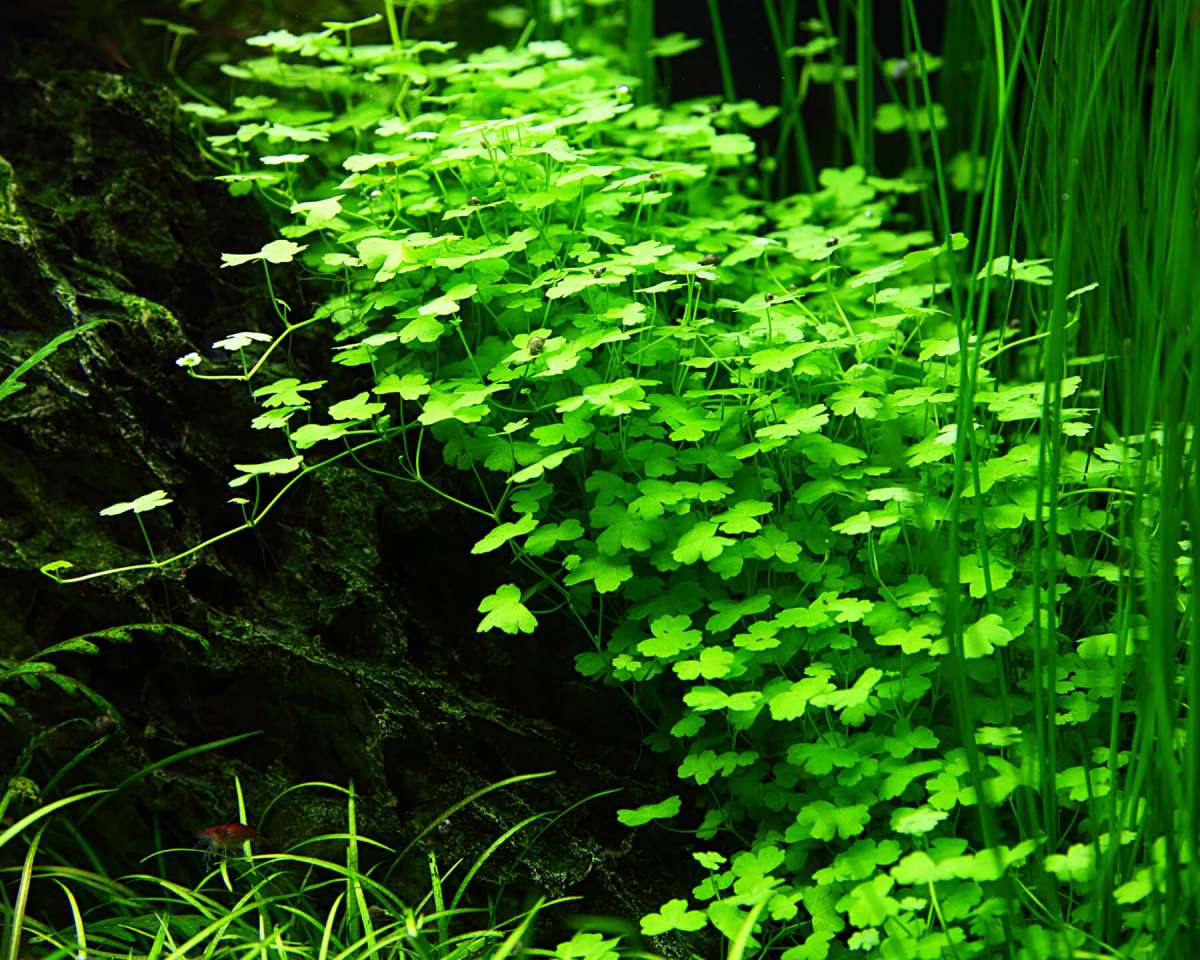
Plants carry out photosynthesis to gain energy. In the process, they build single or multiple sugars in their tissue from carbon dioxide and water with the help of energy from light. As a "waste material", plants produce vital oxygen during photosynthesis - also in the aquarium.
The carbon-rich sugars are needed for tissue formation and as energy storage. Almost half of the dry mass of a plant consists of carbon. WithoutCO2 there can be no plant growth in the aquarium!
How doesCO2 get into the aquarium water?
In principle, a littleCO2 is also dissolved from the air in the water, and the fish, shrimps, snails, bacteria and plants also produce some carbon dioxide when they breathe in the aquarium. However, you will only get aCO2 content of about 0.5 mg/l in the aquarium - clearly too little for many aquarium plants. From their natural home waters, aquatic plants are usually adapted to much higher concentrations.
CO2 is a gas that dissolves quite well in water. Additional fertilisation withCO2 can therefore be a great idea in a planted aquarium or aquascape!
But isn'tCO2 chemistry? I don't want any chemicals in my aquarium!
AlthoughCO2 is the abbreviation for the chemical combination of two oxygen atoms with one carbon atom, carbon dioxide is a naturally occurring gas that is normally produced and exhaled by plants, animals and humans.
A small portion of theCO2 dissolved in the water reacts with the water molecules, resulting in carbonic acid. AddingCO2 to aquarium water can therefore slightly lower the pH value and soften the aquarium water. Many fish and shrimps also like soft and slightly acidic water, so this is optimal for them. They show more joie de vivre, possibly better reproduction, brighter colours and more activity.
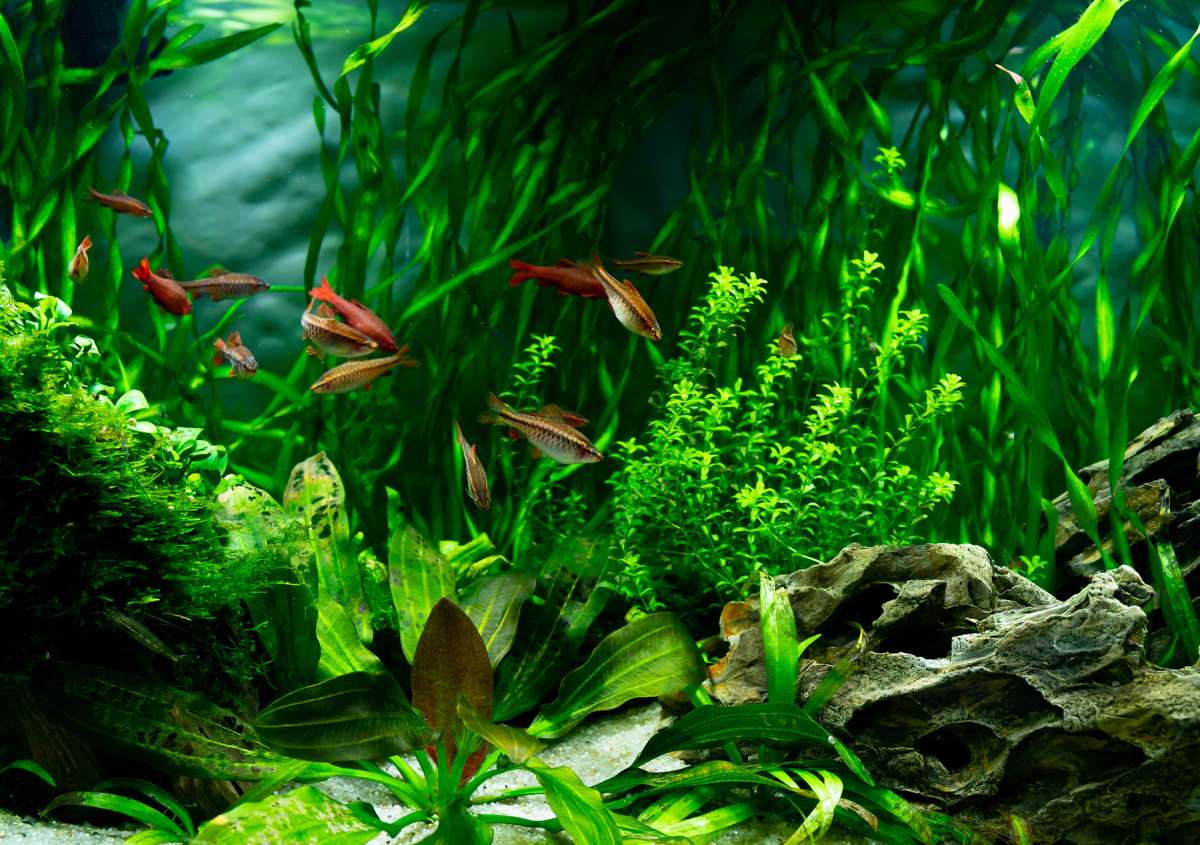
The plants thankCO2 fertilisation with better growth and richer colours. In slightly acidic water, they can also absorb many nutrients more easily.
CO2 in natural waters
In many natural waters with particularly dense, beautiful plant growth, theCO2 content is extremely high at up to 50 mg/l. The CO2 there comes from seepage sources. TheCO2 there comes from seepage sources and from the activity of bacteria in the substrate, which break down and metabolise organic residues. Interestingly, algae do not stand a chance in such an environment.
In waters where significantly lessCO2 is dissolved in the water, severe algae plagues often occur in addition to meagre plant growth.
Good plant growth in the aquarium
Vigorous green and red vital aquarium plants not only look wonderful, they also play a particularly important role in the aquarium's ecosystem. Plants utilise nutrients in the aquarium water for their growth, which are produced during the decomposition of organic residues. Your aquarium plants especially need the macronutrients phosphate, ammonium, nitrate and potassium in large quantities for tissue development and a functioning metabolism and therefore extract these substances from the water, some of which are quite harmful for your aquarium animals.
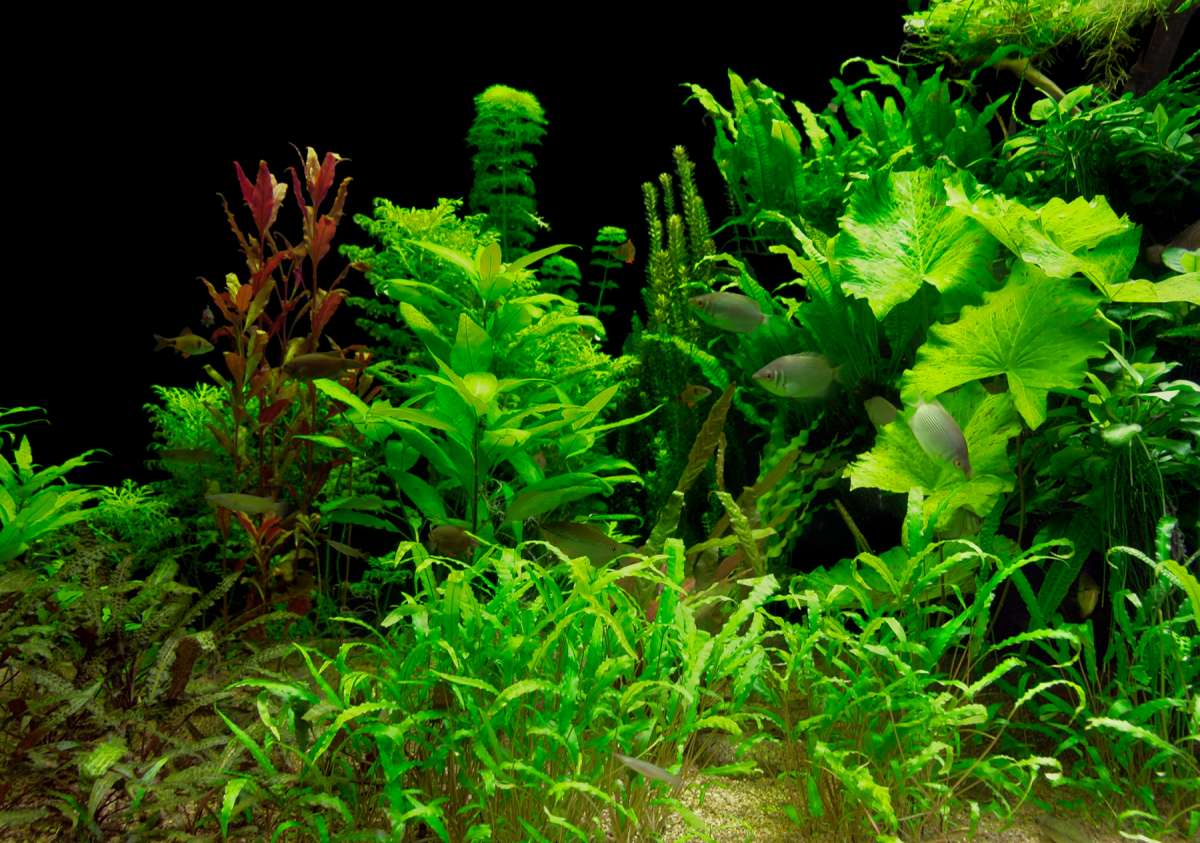
In return, the aquarium plants produce oxygen, which fish, shrimps, snails and crayfish in the aquarium need just as much as the plants themselves to survive. The breakdown of pollutants by the filter bacteria also consumes oxygen. A good oxygen supply in the aquarium is therefore the be-all and end-all for sensible fish keeping and a stable biotope.
Can I run my planted aquarium withoutCO2?
Of course, there are also rather robust aquarium plants that can manage reasonably well with lessCO2. However, even these plants grow better if they really have a good supply ofCO2. At the latest, if you would like to keep red-leaved aquarium plants or choose somewhat more demanding aquatic plants for your aquarium, you really can't do without an additionalsupply of CO2. WithCO2, planted aquariums simply work so much better!
What is the right amount ofCO2 in the aquarium water?
Aquarium fish, shrimps and other invertebrates in the aquarium do not actively exhale. Their gills are well supplied with blood and the waste carbon dioxide simply diffuses into the water due to osmotic pressure. However, this only works as long as there is significantly less of it in the water. At substance equilibrium, diffusion no longer takes place - this is a law of nature.
If high amounts ofCO2 are already dissolved in the aquarium water, the aquarium animals can no longer get rid of the gas from their blood and, in the worst case, may even suffocate. By the way, it does not matter how much oxygen is present in the aquarium water! If the animals cannot excrete theCO2, they cannot absorb oxygen, and then they have a problem.
That's why specialist literature recommends aCO2 level of 20 mg/l for planted aquariums with fish and invertebrates - that way you're on the safe side. For planted aquariums without animals, you can of course go higher.
You should therefore not useCO2 to strongly depress a very high pH value. This would work because the carbonic acid produced by the solution lowers the pH value, but if you look purely at the pH value, it is quite possible that theCO2 content of your aquarium water will exceed the "magic limit" of 20 mg/lCO2 in the water.
How do I monitor theCO2 content in the aquarium water?
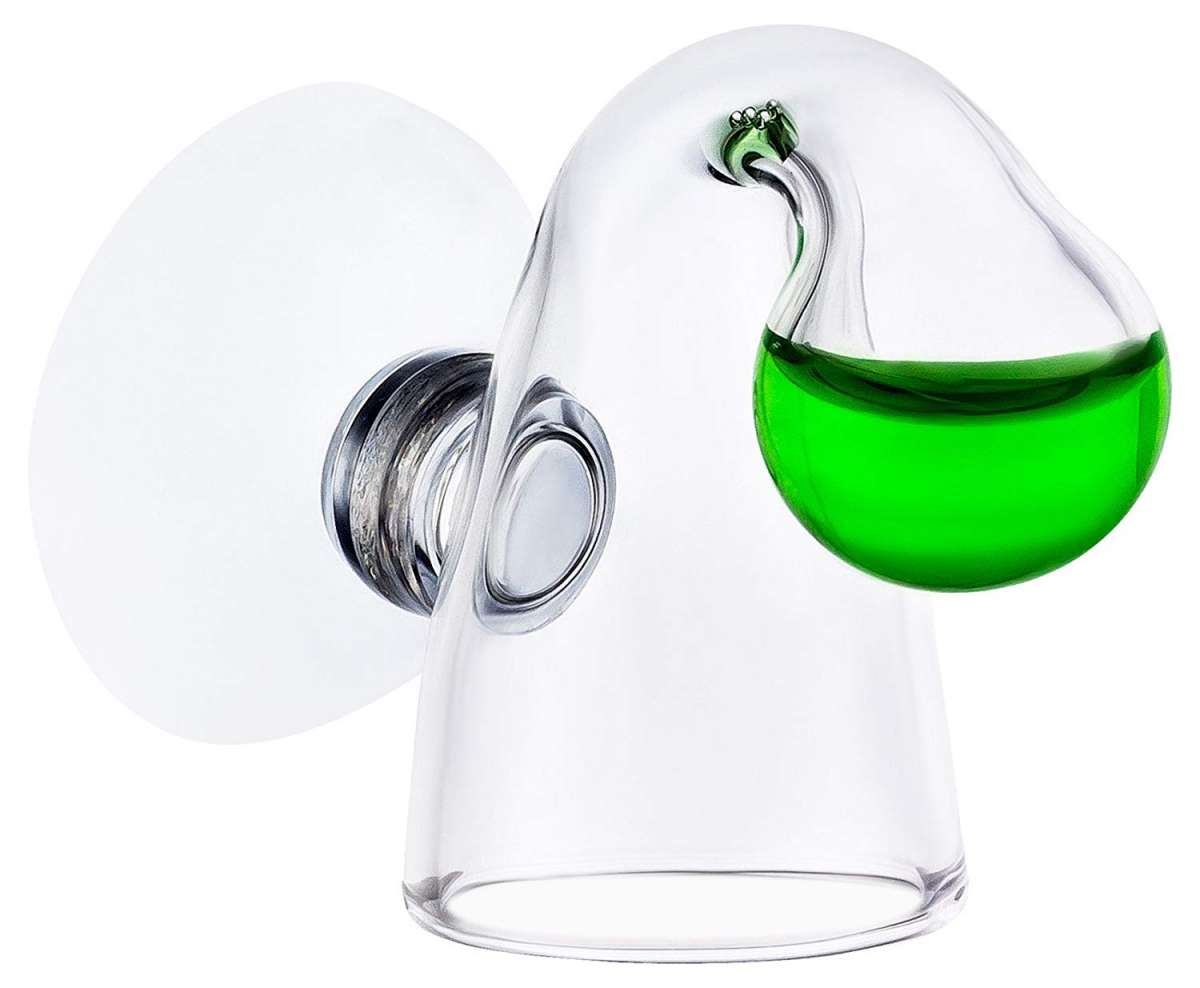
CO2 drop test
For a quick snapshot, there are aquaristic water tests with which you can quickly and fairly accurately determine the currentCO2 content of the water in your aquarium. However, becauseCO2 is constantly added, it is better to monitor theCO2 content of the aquarium water on a permanent basis. A long-termCO2 test orCO2 continuous test is better suited for this purpose.
Long-term CO2 test
The long-term test shows you at a glance how theCO2 content in your planted aquarium or aquascape is doing. The test liquid in it changes colour to show whether theCO2 concentration in the aquarium water is suitable. Blue means too little, yellow too muchCO2. Green means the amount of carbon dioxide in the aquarium is just right.
In the continuous test, the indicator liquid is indirectly connected to the aquarium via an air bubble, i.e. it does not come into direct contact with the aquarium water. TheCO2 diffuses through the air bubble into the indicator and then causes a colour change there. This can take a little time: Your permanent test needs two to three hours to react if you change something in theCO2 supply in your planted aquarium or aquascape.
How are light,CO2 supply and aquarium fertilisation related?
Light,CO2 and fertilisation are, so to speak, the "magic triangle" for plant growth in an aquarium or aquascape. These three factors are interdependent. If one of them is deficient - for example, if you have too littleCO2 in your aquarium water - the aquarium plants cannot grow properly, even if there is enough of the other two. Justus von Liebig formulated this in Liebig's Minimum Law. Applied to aquaristics, this means that your plants in the aquarium can only grow as well as the most limiting factor allows.
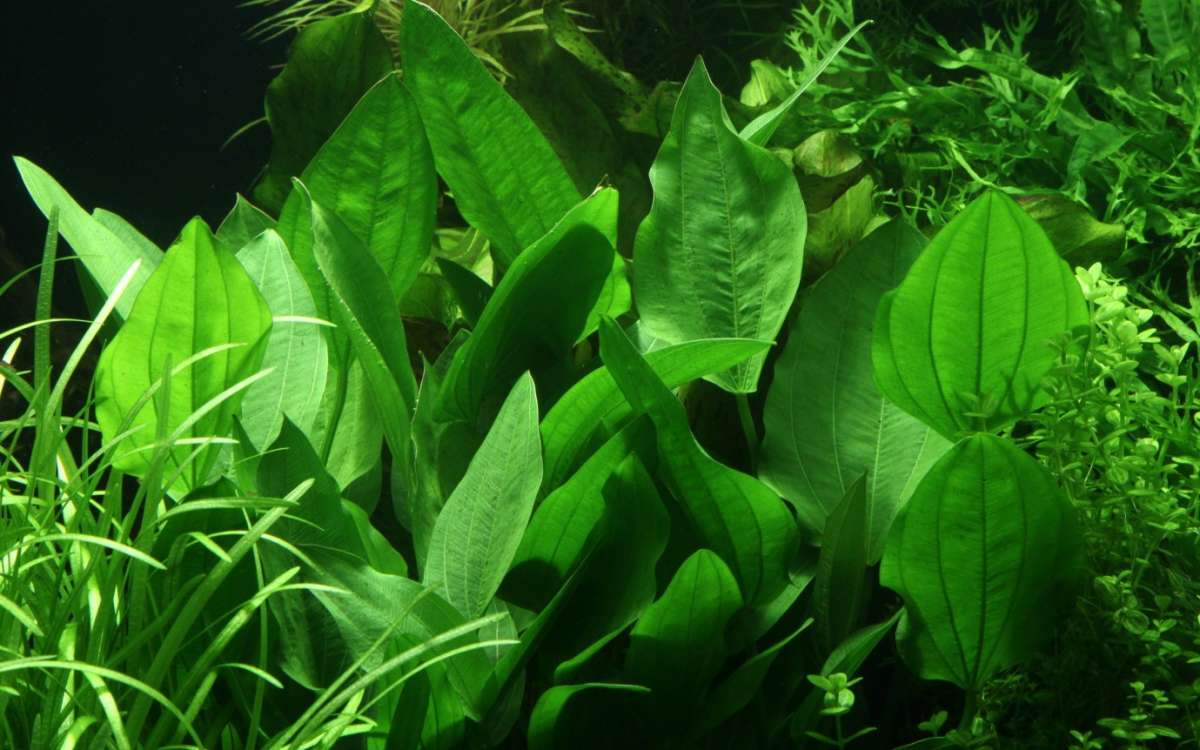
The unloved algae in the aquarium and aquascape like to take advantage of the surpluses that arise and take over the system. Algae cope with deficiencies much better than aquarium plants.
In practical terms, this means that if you hang more powerful aquarium lighting above your aquarium or if you extend the lighting time, the plants will need more nutrients and more carbon in return. You then have to fertilise more and increase theCO2 supply a little to reliably prevent an algae plague. Only when all three factors (light,CO2, nutrients) are sufficiently present can your aquarium plants grow luxuriantly.
Remember: More light = higher nutrient requirements = higherCO2 requirements.
Frequently asked questions aboutCO2 - theCO2 FAQ
How many bubbles per minute should be added to the aquarium?
The amount ofCO2 added to the aquarium water can be finely adjusted on systems with a pressure reducer via a needle valve. As a rule of thumb for the basic setting, add 1 bubble per minute to 10 litres of aquarium water, for example:
- 6 bubbles per minute in a 60 litre aquarium
- 2 bubbles per minute in a 20 litre nano aquascape
- 10 bubbles per minute in a 100 litre aquarium
Please note that the actualCO2 requirement of your aquarium may vary - depending on how warm the water is, how many plants you maintain, how long you keep the lights on, ... that's why a continuousCO2 test is so important. It shows you quite specifically whether theCO2 content in your aquarium is suitable.
Should theCO2 addition run overnight?
Aquarium plants need light for photosynthesis, so they do not consumeCO2 at night. If theCO2 addition remains the same overnight, higher amounts can accumulate in the aquarium water. Also, a lot ofCO2 dissolved in the water can push the pH value to dangerous depths and cause what is known as a drop in acidity.
Especially with pressurised gas systems, a night shut-off is very important. With BioCO2, on the other hand, a night shut-off is not possible at all.
CanCO2 help against algae?
CO2 helps indirectly against algae because, together with fertilisation and lighting, it ensures that your aquarium plants grow properly and are healthier. This allows the plants to compete with the algae, and the unpopular algae retreat.
How long does it actually take for the plants in the aquarium or aquascape to react to theaddition of CO2?
Surprisingly, you can see a difference in the plants in your aquarium or aquascape after just a few days when you start fertilising withCO2. The colours of the plants become brighter, the leaves and stems stronger and the overall appearance more vital.
CanCO2 harm my shrimps or fish?
Too muchCO2 in the aquarium water can cause fish and invertebrates to show signs of respiratory distress. However, if you always stick to the recommended value of 20 mgCO2 per litre of aquarium water, the critical value will not be reached; thisCO2 content is absolutely harmless.
Too muchCO2 can also lead to a drop in acidity. That is why it is also important to switch off theCO2 supply overnight if possible and to monitor theCO2 content of the water with a permanent test.
Why does the water in theCO2 tubes run up?
CO2 is a water-soluble gas. The gas in the hose therefore continues to dissolve in the water even after the night shut-off has been switched off. This can create a vacuum that sucks water into the hose. This so-called creeping water is quite dangerous - if it reaches the pressure reducer, it can cause rust and even destroy the unit.
The remedy here is a return valve that lets theCO2 through in one direction but reliably seals it in the other direction.
